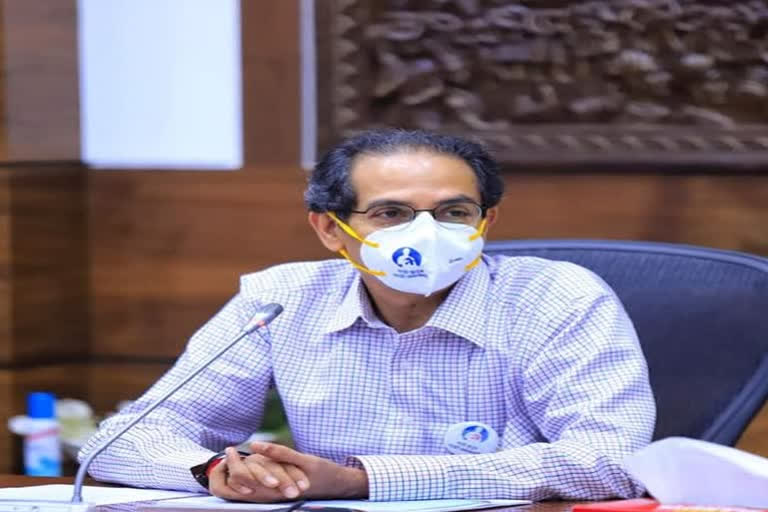Mumbai (Maharashtra): Maharashtra Chief Minister Uddhav Thackeray has instructed the state health department to make ample preparations for the possible COVID third wave including providing oxygen, ICU beds, field hospital facilities to all the districts. In a notice issued by the Chief Minister to the health department, Thackeray said that seven districts with a high rate of infection should be more careful, informed the state Public Relations department. He further directed the health department to increase COVID testing and vaccinations. "7 districts with a high rate of infection should be more careful. Increase tests, vaccinations. Don't rush, don't take risks," read the notice.
Speaking to the district collectors of Raigad, Ratnagiri, Sindhudurg, Satara, Sangli, Kolhapur and Hingoli districts, earlier in the day, in a televised meeting, the Chief Minister had said, "The second wave is not over yet and we have to deal with the third possible wave to recover from it." Maharashtra Health Minister Rajesh Tope was also present at the meeting. The tail of the second wave is yet to come. You are not completely out of it," added Thackeray. Meanwhile, An IIT Kanpur study by Prof. Rajesh Ranjan and Mahendra Verma, along with their team, on Monday said the third wave peak of COVID could be around September - October this year. "There is significant anxiety among policymakers and the public about the third wave. For the same, using the SIR model, we have constructed the following three scenarios of a possible third wave using the epidemic parameters of the second wave.
We assume that India is fully unlocked on 15 July. Scenario 1 (Back-to-Normal): Third-wave peak in October but a lower peak height than the second wave. Scenario 2 (Normal with virus mutations): The peak could be higher than the second one and may appear early (September). Scenario 3 (Stricter interventions): The peak of the third wave could be delayed until late October with strict social distancing. Here, the peak will be lower than the second wave," a press statement said. Profs. Rajesh Ranjan and Mahendra Verma, along with their team at IIT Kanpur, provide daily COVID-19 forecasts in India on covid19-forecast.org.
Also read: Experts in India issues caution over Delta+ ahead of third wave
As per the assessment from the IIT Kanpur team, the second wave has waned significantly almost in every state except in some Northeast states (Mizoram, Manipur, Sikkim etc.). The study notes that mostly positivity rate is less than 5 per cent but Kerala, Goa, Sikkim and Meghalaya still have a positivity rate of more than 10 per cent. "India's average daily case count has reduced significantly. As on 19 June, it is 63,000 compared to the peak of about 4 lakhs. Most states have a daily Test Positivity Rate(TPR) less than WHO recommended level (5 per cent). However, Kerala, Goa, Sikkim, Meghalaya still have high daily TPR (10 per cent)," it said.
As per the study, India's daily Case Fatality Rate (CFR) has increased recently to 3.5 per cent, but the cumulative CFR of the second wave is comparable to that of the first wave. "At present, the model does not include vaccination, which should decrease the peak significantly. The revised model with vaccination and with more recent data on the same is being worked out," the study said. By the end of this week, another study by IIT Kanpur on the third wave is expected to come.
Also read:Over 2,000 people in Mumbai fell victim to fake COVID-19 vaccination drives: Maha to HC
(ANI)



